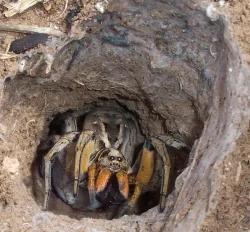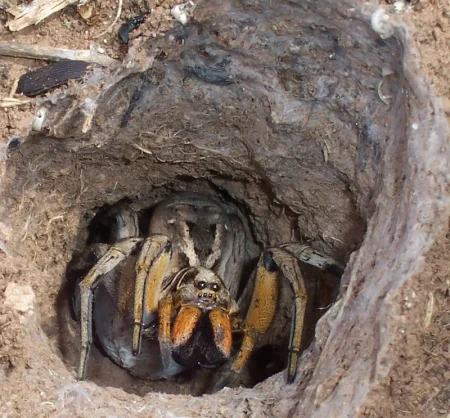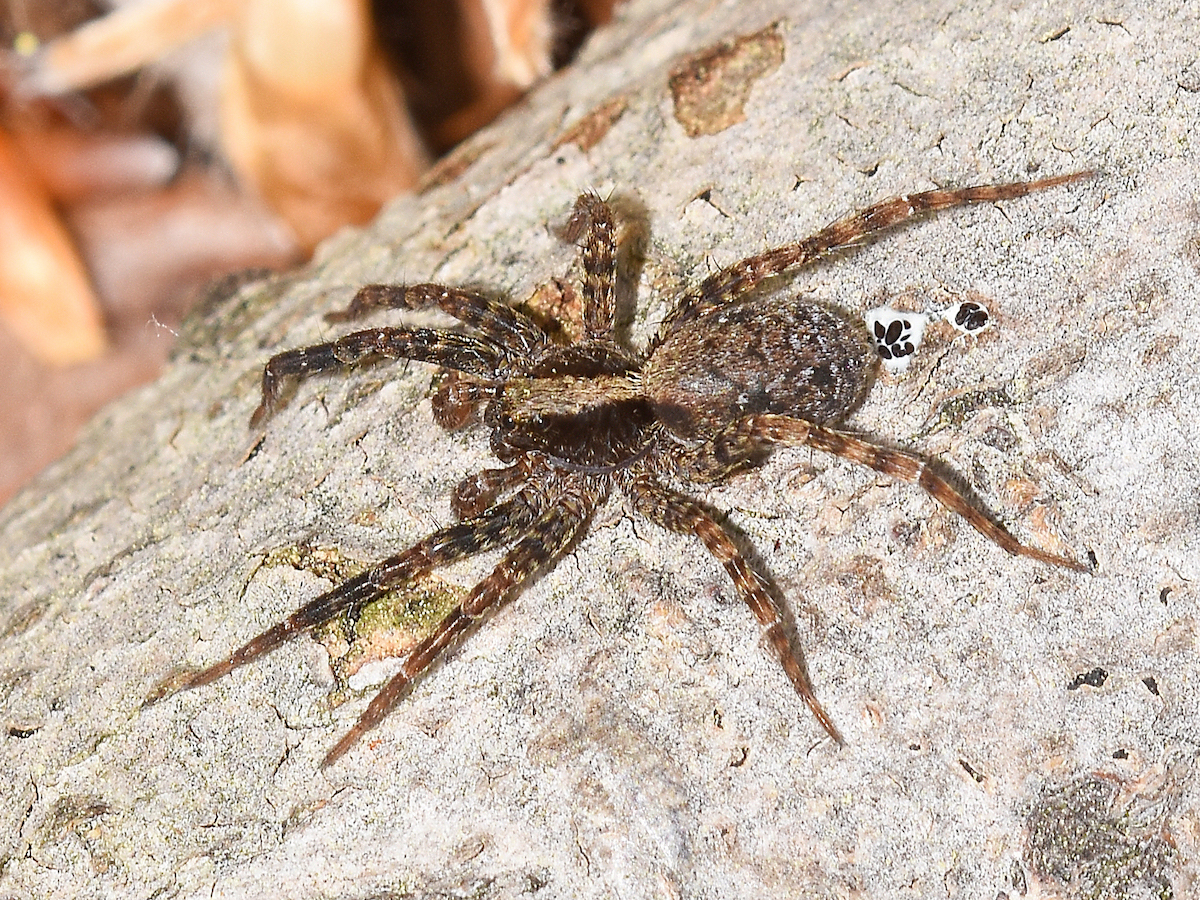How to Get Rid of Wolf Spiders: Insights for Effective Control

Table of Contents
When dealing with a wolf spider infestation, knowledge is the key to success. To effectively eliminate these spiders from your home, it is crucial to understand their behavior. In this article, we will explore the habits, preferences, and vulnerabilities of wolf spiders.
Armed with these valuable insights, you will have the necessary information to take proactive measures and say goodbye to these elusive creatures for good.
Let’s delve into the captivating world of these creatures’ behavior and discover effective strategies to deal with them and learn how to get rid of wolf spiders.
Key takeaway:
- Wolf spiders are active hunters with excellent eyesight and agility, and they do not build webs.
- Wolf spiders prefer to live & hunt alone, and their social behavior is limited to territorial conflicts and mating.
- There are around 2,300 known species of wolf spiders worldwide, with different identifying features.
- Preventing wolf spider infestations can be achieved by sealing entry points, reducing clutter, trimming vegetation, and using natural repellents.
- Wolf spiders are generally not dangerous to humans: While wolf spiders can bite if threatened, their venom is typically not harmful to humans.
Identifying Wolf Spiders
Wolf spiders are found in every corner of the world. They belong to the Lycosidae family, and these spiders are pretty special due to their hunting habits and agility. Different species vary in size, those all of them are larger than common household spiders. They range from 0.4 to 1.2 inches (10-30 mm) in length and have a stout and robust body and long legs to move very fast.
Eyes are a distinctive feature of these spiders. They have two large forward-facing eyes in the middle and two small eyes on both sides of their heads. Their color can be a mixture of brown, black, and gray, with a mottle or striped appearance that helps them to blend into the surroundings.
These spiders do not build webs. They are active hunters, able to chase and capture their prey due to their perfect eyesight and agility. Wolf spiders live in various habitats, like forests, grasslands, and urban areas, both indoors and outdoors. They hide in crevices, under rocks and logs, and in dark corners. Their legs are long and hairy, and such legs help the creatures move very quickly.
Understanding Wolf Spider Behavior
Wolf spiders are unique in their hunting habits and behavior. They rely on their eyesight to locate and capture prey. Instead of building webs, they roam around in search of insects to feed on. They hunt for ants, crickets, flies, grasshoppers, and other spiders.
These spiders do not live in colonies or build communal webs. They prefer to live and hunt alone. Their social behavior is limited to territorial conflicts and mating. The creature can make burrows in the ground or under logs, rocks, or other debris. They serve as shelters to protect against predators and severe weather conditions. They hide in their burrows when they need retreat and recreation.
Wolf spiders are nocturnal creatures. They can freely navigate in low-light conditions. Females are pretty good mothers that produce an egg sac and then carry it attached to their abdomen. Even after the spiderlings hatch, the mother carries them on its back before they disperse to new areas.
The spiders prefer to avoid confrontation with bigger animals and humans. They usually run away and hide. Though they can bite while threatened or cornered. Bites may results in swelling, redness, and local pain, similar to that from bee or wasp stings. However, if you feel a strong discomfort, you need to seek medical advice.
Common Types of Wolf Spiders
There are around 2,300 known species of wolf spiders worldwide. They include such common ones as the following:
- Hogna (Lycosa) spp. found across North America, Asia, and Europe;
- Pardosa spp. distributed globally in a variety of wetlands, forests, and grasslands;
- Lycosa tarantula is native to Europe, and is the largest wolf spider species, however, not closely related to true tarantulas;
- Schizocosa spp. includes a large group of species common to North America and associated with open habitats;
- Trochosa spp., which is found in various regions of the world, like Asia, Europe, and North America, and has a distinctive dark stripe on its back;
- Lycosidae spp. (normally refers to species that are not identified but normally means any wolf spider species).
The diversity of these spiders is vast, and their identification demands thorough examination and a lot of expertise.
Types and their distinguishing features

The most popular types encountered in the USA have their specific features. Let’s consider some of them.
The Carolina wolf spider or Hogna carolinensis is 1.2 inches (30mm) long, with females a bit bigger than males. The body is hairy and robust, and the color can be brown, black, or gray. These spiders can also have pale stripes on their upper body. These creatures are found in the southeastern United States, in the fields or forest edges. The most distinctive feature is the “X” or “H” patterns on their carapace.
Rabidosa species are medium-sized, and they are 0.6-1 inch (15-25 mm) long. Their coloration is a mix of gray, brown, and black, with lighter markings on their carapace. These spiders live in grasslands, forests, and urban areas. Most of them have a crescent-shaped mark on the abdomen.
The Tasmanian wolf spider is also medium-sized, reaching about 0.8-1.2 inches (20-30 mm) in length, which is most specific for females. Their bodies are stout and hairy, with a mix of brown, gray, and black colors, and a carapace patterned with patches. These spiders are not specific to the USA because they live in grasslands, forests, and heathlands of Tasmania. Nevertheless, they can be brought here by luggage and shipping. These creatures have a distinctive feature – reddish-orange mouthparts and pedipalps.
Trochosa species are also medium-sized, ranging from 0.6 to 1 inch (15-25 mm) in length. Their bodies are slender and hairy, colored in black, brown, and gray. The carapace has a dark stripe. These spiders live everywhere in North America, Asia, and Europe, in open areas and grasslands. They also have a dark stripe on their carapace.
Brown Wolf Spider
You may often hear the term “brown wolf spider”, but it does not refer to any specific species. Most spiders of this type have a brown coloration.
The appearance of brown-colored spiders does not differ much from their counterparts belonging to other species. Their brown or tan coloration helps them blend into their natural habitats and hunt successfully. These creatures also have long legs that enhance their hunting abilities and prominent eyes to ensure excellent vision of prey.
Wolf Spiders in Michigan and in Pennsylvania
Each state may have some specific wolf spider species. For example, wolf spiders in Michigan can be Pardosa spp., Hogna spp., and Rabidosa spp. Pardosa are commonly found here, and they are usually gray. They are also referred to as the gray wolf spider. Hogna or the Carolina wolf spider can be found in the southern part of the state. The rabid wolf spider is also encountered, but not too often.
As for wolf spiders in Pennsylvania, they can as well be Pardosa, normally encountered in all parts of North America, Hogna inhabiting some parts of the state, and also Schizocosa, known as ground spiders, which are prevalent in Pennsylvania in grasslands and meadows.
There may be other species, but if you want to identify them more accurately, you may need expert help from professionals.
Wolf Spider Infestation Prevention

You may wonder how to prevent a wolf spider infestation. You will need some preventive steps to avoid it. They are the following:
- seal all entry points in doors, windows, walls, and foundations;
- remove clutter from your backyard;
- trim vegetation that comes into contact with your house, like bushes, shrubs, and tree branches;
- install door sweeps on exterior doors;
- declutter the space indoors, especially in attics, basements, and storage places;
- clean and vacuum your home regularly;
- reduce outdoor lighting by using yellow-colored bulbs and turning off the lights when they are not needed;
- do away with moisture by fixing leaks, plumbing issues, and ventilation;
- use insect screens on windows and doors;
- consider natural repellents, like peppermint oil, vinegar, or citrus peels.
These measures can significantly reduce the likelihood of a wolf spider infestation, though the risks always remain, and severe spider problems may need pest control professional assistance.
Natural & Non Natural Solutions for Wolf Spider Elimination
If you need to eliminate the existing wolf spider infestation, choose between natural and chemical solutions.
Natural methods include the following:
- vacuuming and disposing of the vacuum bag’s contents immediately to eliminate wolf spider nest presence in your home;
- reducing prey sources by fixing all moisture issues, keeping your home clean, sealing food containers, and minimizing outdoor lighting;
- using essential oils, such as peppermint, citrus, or tea tree;
- buying repellents with plant-based ingredients;
- applying sticky traps and replacing them regularly.
As for chemical solutions, they may be insecticides and professional pest control. While using chemical insecticides, remember to follow all the instructions on the product label carefully. Contact a professional pest control service when the infestation is severe. They can assess the situation in your household and apply targeted treatments.
Dealing with Baby Wolf Spiders
The baby wolf spider infestation is difficult to deal with, though you may need similar principles as adult spiders. You may apply the following steps:
- Identify and locate spiderlings that move away from the wolf spider nest and hide in different spots.
- Vacuum your home with a hose attachment that is effective for capturing baby spiders. Don’t forget to empty the container immediately after vacuuming.
- Reduce potential food sources to discourage spiderlings that feed on small insects.
- Eliminate standing water and fix all plumbing issues that may attract other insects which are potential food for baby spiders.
- Use natural repellents as mentioned earlier. Those that are effective against adult spiders are also efficient against spiderlings.
- Seal entry points to prevent baby spiders’ entry into your home.
- Seek professional assistance if you are dealing with a large number of spiderlings.
If you want to avoid direct contact with any baby wolf spider, wear gloves and use a long-handed broom or brush.
Understanding the Life Cycle of Wolf Spiders
If you want to understand properly how to get rid of wolf spiders in your home, the knowledge of their life cycle may help a lot. Here are the main stages of this life cycle:
- Egg stage: Females make an egg sac and carry it with them attached to the spinnerets. The number of eggs may vary from several dozen to a few hundred depending on the species. The female carefully protects the sac until the baby spiders hatch.
- Spiderling stage: When spiderlings hatch, they resemble the adult version. They disperse by “ballooning.” They release a silk thread, and the wind catches it and carries it to new areas. The spiderlings are pretty vulnerable and need immediate shelter and food.
- Juvenile stage: Now, the spiderlings molt several times and shed their exoskeletons to fit their growing wolf spider size. The molting process is called an instar. The number of instars differs depending on the environmental conditions and types of wolf spiders.
- Adult stage: After the final instar, the spider becomes an adult. It means that it is sexually mature and starts engaging in mating behaviors. Males can wander long distances, while females normally stay in their established territory. The wolf spider lifespan can be several years, varying by species.
The duration of each stage also depends on temperature, food availability, and type of species.
Targeted Strategies for Managing Baby Wolf Spiders
If you want to manage baby wolf spider populations in your household, use some targeted strategies. They are the following:
- vacuuming and removal;
- cleaning and decluttering;
- sealing entry points;
- reducing prey sources;
- using natural spider repellents;
- seeking professional assistance.
As you see controlling baby spiders does not differ much from the methods used for managing adult populations. However, if you see spiderlings in your home, you need to address them as soon as possible to avoid more severe infestations.
Professional Extermination Services for Wolf Spiders
If you are not able to manage a severe wold spider infestation on your own, contact a professional extermination service. The expert technicians will do the following for you:
- a thorough inspection to assess the extent of the infestation;
- a treatment plan based on your specific situation;
- chemical treatments by using targeted insecticides or pesticides;
- residual barrier applications around the perimeter of your home to prevent future infestations;
- follow-up visits to monitor the effectiveness of the treatment;
- education and advice on how to make your home less attractive to spiders.
Remember to choose a reputable company that has a lot of experience in dealing with spider infestations.
When to Consider Hiring a Professional Exterminator?
You may need to hire a professional exterminator in the following situations:
- severe infestations;
- persistent infestations;
- safety concerns if anyone in your household has arachnophobia;
- health risks if your family members suffer from allergic reactions;
- structural damage due to spiders’ nesting habits.
Mostly, a few wolf spiders noticed in and around your home are not a cause for concern. They can even be beneficial because of their ability to control other insects’ populations. Nevertheless, if you are not certain about managing spiders or have specific concerns, it is better to consult a professional exterminator.
Final Thoughts
So, now you know a lot about different types of wolf spiders, their habits, and ways to deal with them.
If you need advice on how to get rid of wolf spiders, consider such steps as identification and localization of wolf spiders and their hiding spots, vacuuming regularly, cleaning and decluttering your home, sealing entry points, reducing prey sources, using natural spider repellents, and asking for help from professional extermination services. You will have to follow their advice and recommendations and implement preventive measures to avoid future infestations.
FAQ
The wolf spider poisonous venom is not harmful to people. It is meant to subdue their prey by immobilization. However, spiders can bite you and cause mild symptoms, like itching, swelling, redness, and pain. These reactions will resolve on their own in several days. In the case of individual reactions to spider bites, it is recommended to clean the area with soap and water, apply a cold compress, and seek medical attention.
No, these spiders are not dangerous to humans. They can bite you only if they are threatened or cornered. So, their bites on humans are relatively rare. Most reactions to these bites are mild, and they resolve on their own within a few days. Individual reactions, though, can be more severe, so consult your medical care provider if you experience them. Avoid provoking and handling spiders, and you will be entirely safe.
Wolf spiders are carnivorous, so they mainly feed on insects and other small invertebrates. The typical diet may consist of insects, like flies, mosquitoes, ants, beetles, crickets, grasshoppers, and other spiders, and small arthropods like mites, tiny crustaceans, and springtails. The diets may depend on the habitat and availability of prey. These spiders contribute to balancing different ecosystems, so they are helpful if not overpopulated.
The wolf spider lifespan can vary depending on the environment and types of species. On average, these spiders can live for 1-3 years. The factors that may affect their lifespan also involve gender (females live longer), temperatures, humidity, and food availability. The lifespan can also be influenced by diseases and predation.
Yes, wolf spiders can bite when they feel threatened or provoked. They are not aggressive to humans by nature and would rather avoid contact with you. Their bites are only a defensive response. So, if you suffer from allergic reactions or uncontrolled fear of spiders, it is better to avoid such contact on your part, too.
Wolf spiders are excellent jumpers, unlike many other spider species. They do not build webs to catch their prey. So, they use jumping for chasing down and capturing their potential food. They have strong and muscular legs that allow them to leap distances equal to their body size. However, these spiders do not entirely rely on jumping, and they mostly run and climb like many other spider species.

